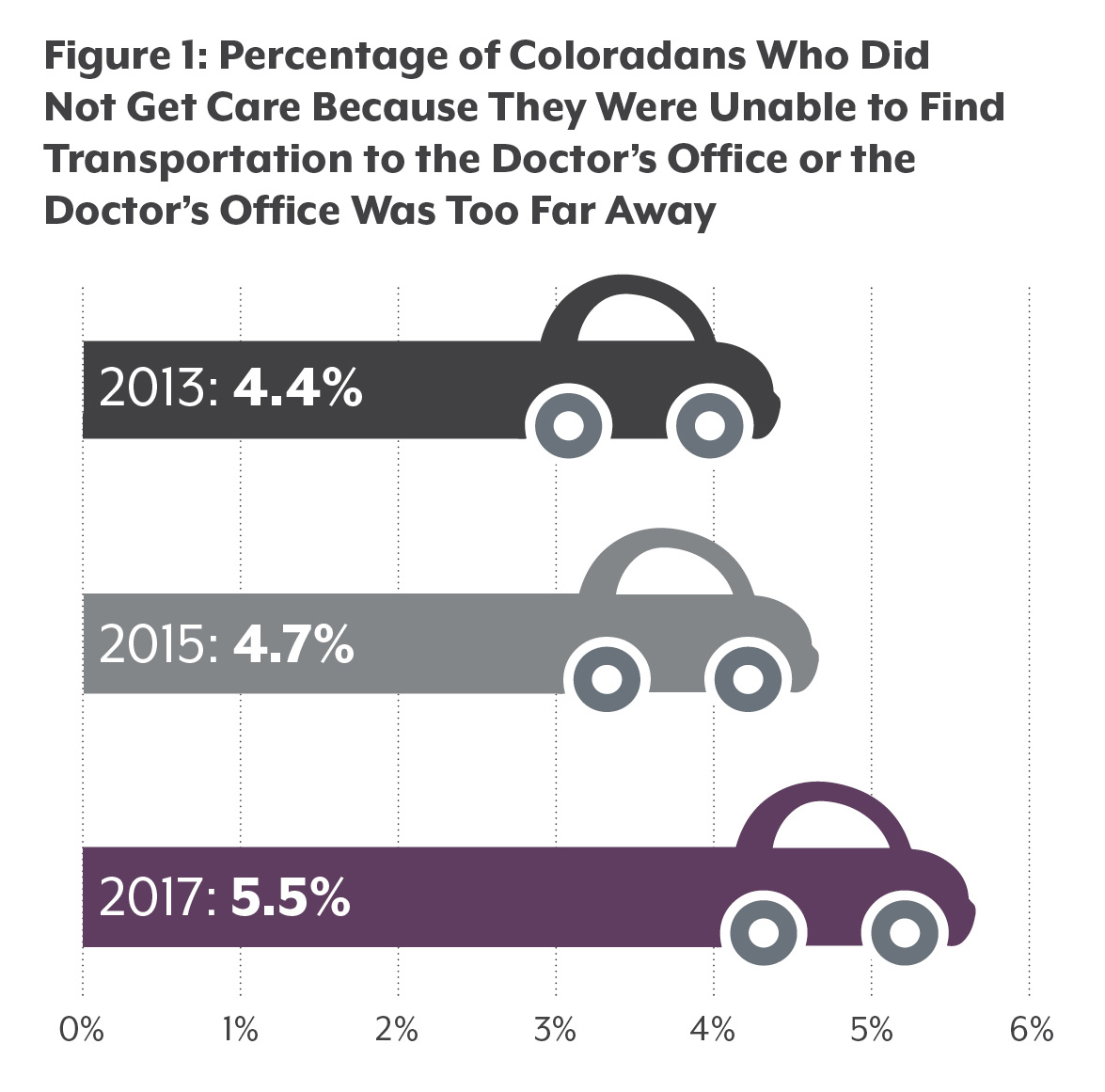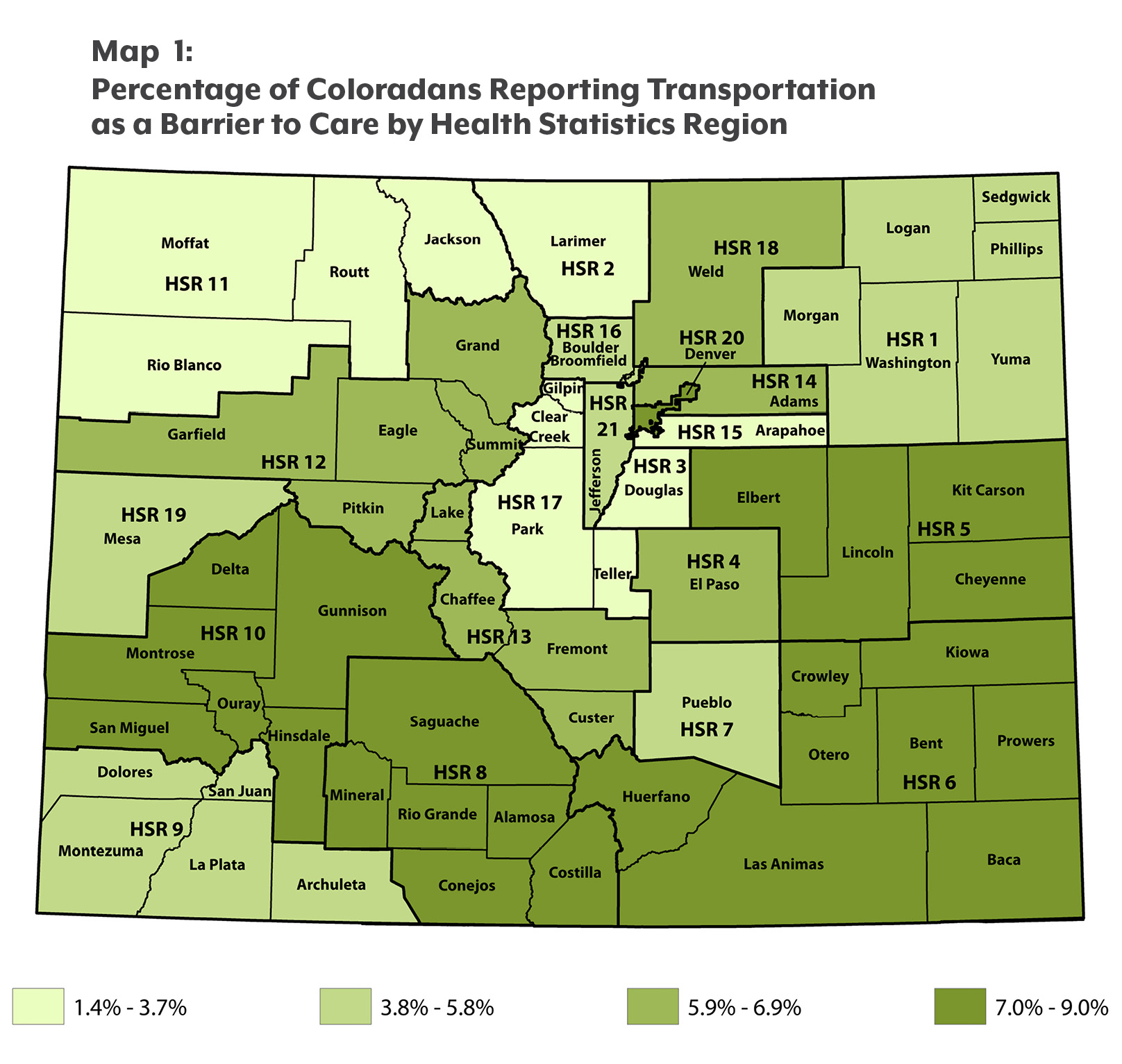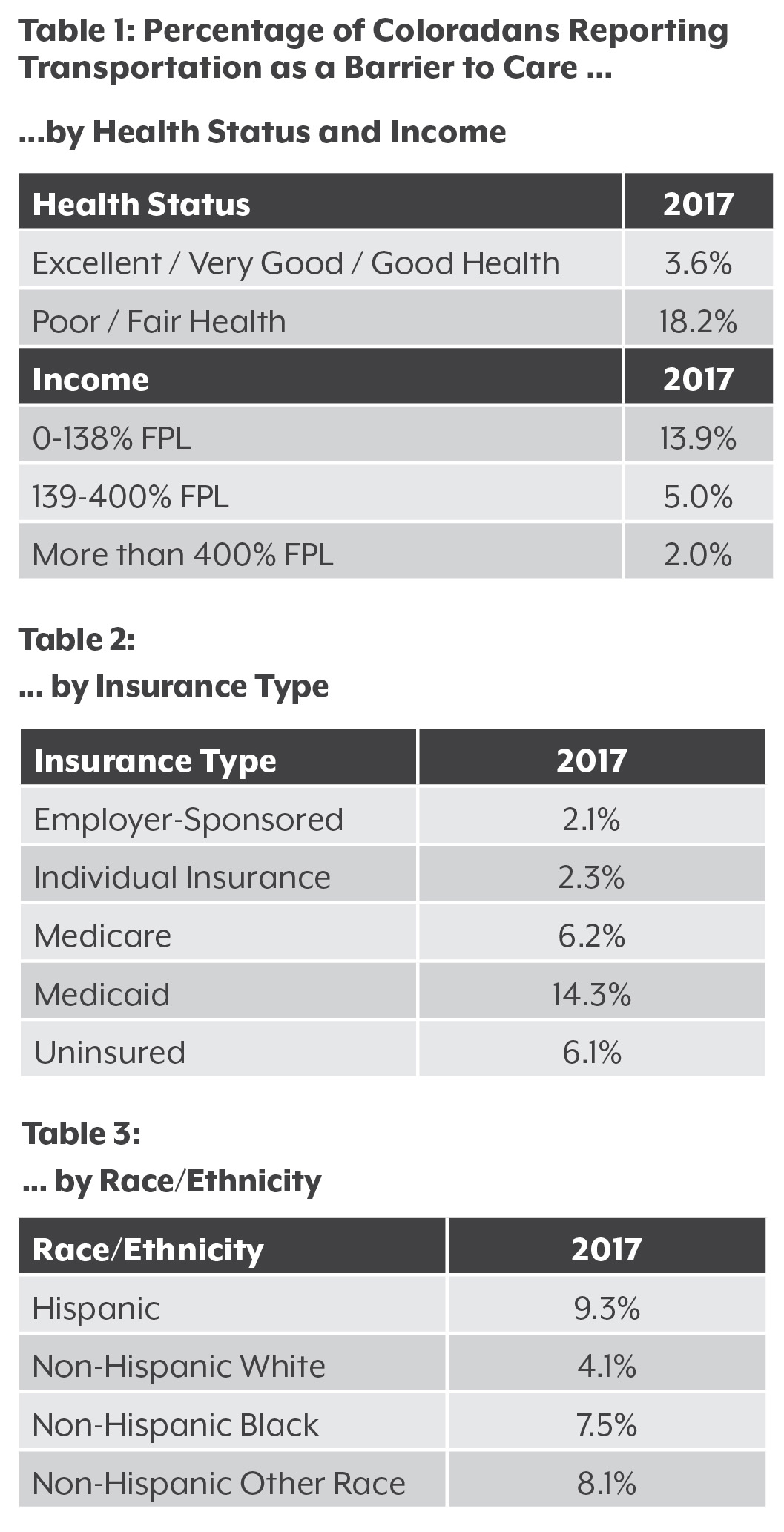
Transportation is a Barrier to Care Across Colorado
Key Takeaways
- A small but growing number of Coloradans say they don't get the health care they need because they lack transportation.
- People in poor health are much more likely to see transportation as a barrier to care than those in good health.
- The problem is most acute in rural areas as well as the city of Denver.
Yet this is reality for more than one of 20 Coloradans, according to the 2017 Colorado Health Access Survey (CHAS). Some 5.5 percent of Coloradans reported that they were unable to find transportation to the doctor’s office or that the doctor was too far away. Transportation issues prevented nearly 300,000 Coloradans from getting the health care they needed in 2017 – a slight uptick from previous years.
It’s not just a rural problem: People in Denver were as likely to struggle with transportation as those in much more remote areas of the state. And it’s not just about specialty care: More people reported that they had trouble getting to their primary care doctor than to a specialist.
The people who have trouble getting to the doctor are the ones who need to go most — people with worse health. Those with lower incomes and Medicaid members also had more trouble with transportation.
Poor Health, Less Income and No Way to Get to Care
People who reported that they were in fair or poor health on the CHAS were much more likely to say that transportation was a barrier to care than those in excellent, very good, or good health.
Nearly one of five people in worse health reported that transportation was a barrier to care, compared with one of 28 with better health.
When you’re struggling with a chronic medical condition, it can be difficult to get to the doctor’s office. Worse health may also mean you’re more likely to need to see a doctor in the first place. Conditions might worsen when care is out of reach.
People who make less money also had more trouble getting to their doctors’ offices: More than one of eight people who make 138 percent of the federal poverty level or below (about $33,948 for a family of four in 2017) said transportation was a challenge, compared with just one in 50 of those making 400 percent or above (about $98,400 for a family of four).
All income groups reported slightly more trouble getting to health care in 2017 than in previous years, but those with lower incomes were more likely to struggle. People with lower incomes may be less likely to have their own transportation, or they may live in areas where public transportation is less accessible.
Insurance status and care
In 2017, people enrolled in Medicaid were more likely to say they had trouble getting to their health care appointments than people with any other type of insurance. One in seven people enrolled in Medicaid struggled with transportation – more than five times the rate of people with employer-sponsored insurance.
Medicaid covers many people who are disproportionately likely to face transportation barriers — those with lower incomes and worse health. But, unlike other insurers, Medicaid covers non-emergency transportation for those who need it. (See sidebar on Page 2.)
Specialty and Primary Care
Getting to a primary care doctor posed a problem for more Coloradans in 2017 than getting to specialty care. Some 32.3 percent of those who had trouble with transportation said they couldn’t get to a general doctor, compared with 26.6 percent who had trouble getting to a specialist. Another 31.8 percent said they had trouble getting to both.
Regional Differences
Transportation issues may conjure up images of remote mountain cabins or farms on the Eastern Plains, but the CHAS reveals that transportation is not just a rural challenge: While 6.3 percent of rural Coloradans said transportation was a barrier, so did 5.4 percent of urban residents.
The rural San Luis Valley had the highest rate of trouble accessing transportation (9 percent). The southeastern plains and the area surrounding Gunnison also had high rates of transportation problems. But Denver had the second-highest portion of people reporting trouble with transportation, with 8.6 percent of residents reporting trouble getting to care. Douglas County had the lowest rate of people reporting trouble with transportation, while rural in northeast Colorado also had a small percentage of people reporting trouble.
Some counties saw changes over time: The central Eastern Plains region, including fast-growing Elbert County, for one, saw a large increase in people reporting trouble with transportation, from 2.7 percent in 2013 to 7.8 percent in 2017. Boulder and Broomfield counties also saw a jump – from 1.3 percent to 4.8 percent.
Who’s Not Accessing the Care They Need?
Women are slightly more likely than men to report this challenge (6.5 percent of women, compared with 4.5 percent of men in 2017). That’s remained true since 2013, when this question was first asked.
By race and ethnicity, non-Hispanic white Coloradans are consistently the least likely to report that transportation is a barrier. Hispanic Coloradans were most likely to report that transportation is a barrier.
Conclusion
In order to get the health care you need, you first have to be able to get to it.
Not having a vehicle, lack of public transit, the cost of transportation, and long distances between home and care can prevent people from obtaining treatment.
That’s not to mention the way that transportation options in a community can affect health: Living in a walkable community, having safe spaces to walk or bike, and having a shorter commute can all positively affect physical and mental health.
The CHAS is a reminder that these transportation issues disproportionately affect certain groups of people, including Hispanics, lower-income Coloradans, and people who have poor health.
Coloradans are trying out solutions, including pushing for improvements in the Medicaid transportation benefit, using ride-sharing services, having doctors make house calls and expanding the use of telehealth.
It will likely take a combination of all of these efforts to ensure that lack of transportation and long distances no longer prevent Coloradans from accessing the health care they need.






